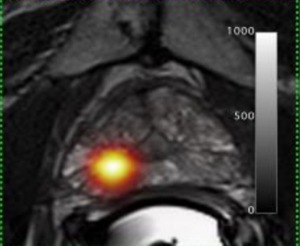por
John W. Mitchell, Senior Correspondent | May 12, 2016
The first Canadian application of Prostate Specific Membrane Antigen (PSMA) combined with PET scans successfully identified the precise location of cancer in a 64-year old man's prostate.
“This first experience is very encouraging in that the probe is performing as we hoped and accurately identifying the important areas of cancer in the prostate gland.” Dr. Glenn Bauman, radiation oncologist and scientist at the Lawton Health Research Institute in London, Canada told HCB News.
According to Bauman, probes can serve as chemical molecules or antibodies that are designed to attach specifically to parts of the PSMA protein, in the same way as a specific key fits into a specific lock.



Ad Statistics
Times Displayed: 194156
Times Visited: 5654 For those who need to move fast and expand clinical capabilities -- and would love new equipment -- the uCT 550 Advance offers a new fully configured 80-slice CT in up to 2 weeks with routine maintenance and parts and Software Upgrades for Life™ included.
While there are many different probes deployed to identify different cancers, none has emerged as especially sensitive at identifying prostate cancer. Probes are injected into a patient where they spread to identify diseases. Bauman called the new 18F-DFCPyL molecule that makes up this new PSMA prostate probe “a very promising molecule.”
“This is a tremendous step forward in the management of prostate cancer,” said Bauman, “PSMA probes have the potential to provide increased accuracy and detection, which leads to better treatment for individual patients.”
The prostate specific membrane antigen behind the new probe was discovered as a prostate cancer marker nearly 20 years ago. But it took time to perfect the scientific application to treat the disease. Bauman said that his team was afforded the first opportunity to participate in a trial because of their close collaboration with colleagues at Johns Hopkins Hospital in the U.S. where the 18f-DFCPyl PSMA probe was developed.
“Developing new probes requires collaboration among many types of scientists and clinicians...including molecular biologists and medicinal chemists,” added Bauman. He said that moving into human use then requires working with imaging physicists and imaging clinicians.
Bauman explained that the trial with the prostate PSMA will address one of the “severe limitations” in treating prostate cancer: the ability to stage – or target the cancer – properly. This new prostate PSMA appears to work well in conjunction with PET scans.
The trial plans to study the probe in an additional 20 male patients over the next two years. The study is particularly interested in patients who experience reoccurrence of prostate cancer after initial prostate removal and radiotherapy treatment.
“The hope is by injecting a labeled PSMA probe into a man with prostate cancer it is possible to detect very small amounts of prostate cancer cells that may exist in the prostate or outside the prostate in tissues like the bone or lymph nodes,” said Bauman.
Back to HCB News

